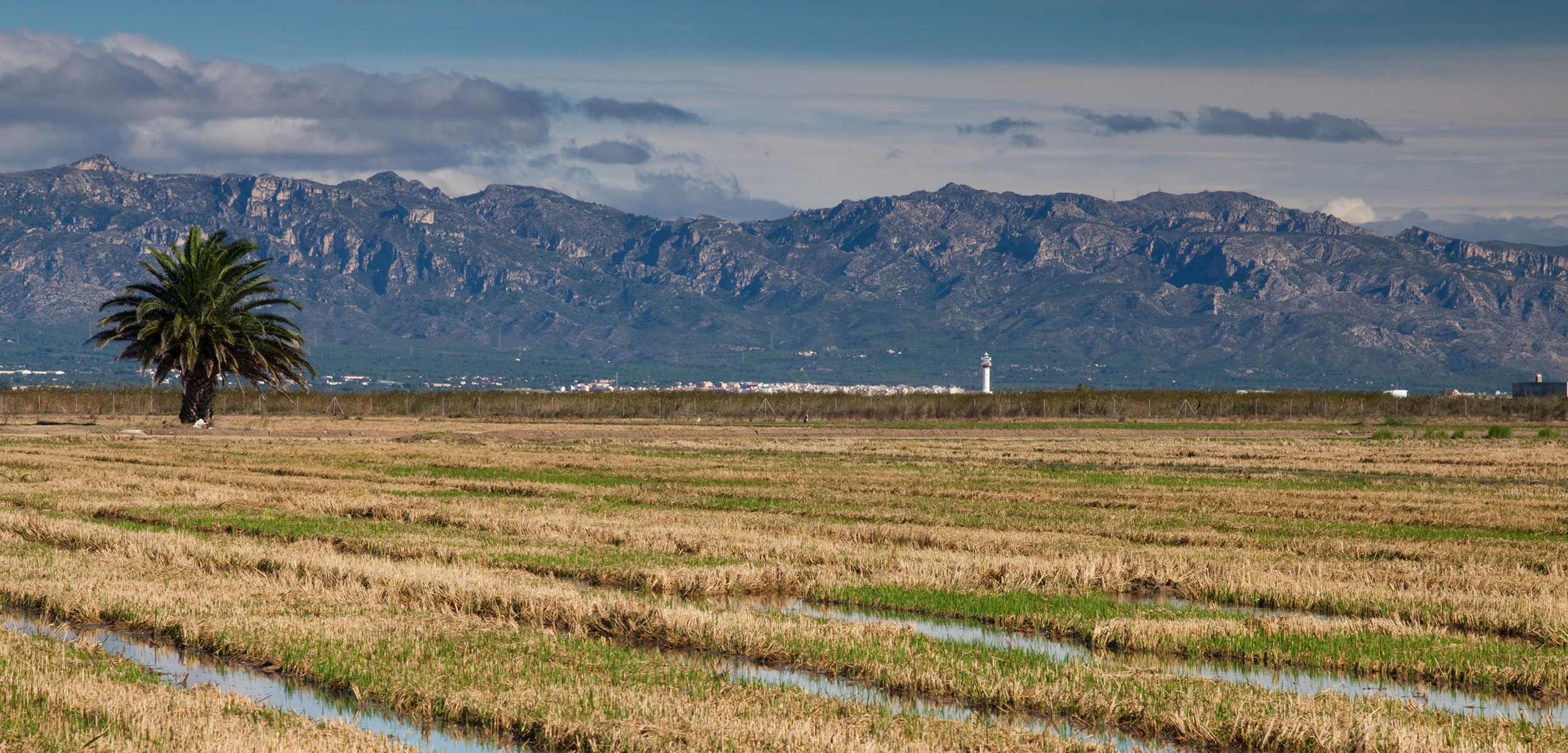Europe’s Race to Save Its Rice
Biologists are trying to breed a salt- and snail-resistant line of European rice.
Article body copy
The Ebro Delta, famous as a battleground during the Spanish Civil War, is now the setting for a different contest, one that is pitting rice farmers against two enemies: the rice-eating giant apple snail, and rising sea levels. What happens here will have a bearing on the future of European rice production and the overall health of southern European wetlands. Not to mention the future of Spanish paella and Italian risotto.
Located on the Mediterranean just two hours south of Barcelona, the Ebro Delta produces 120 million kilograms of rice a year, making it one of the continent’s most important rice-growing areas. As the sea creeps into these freshwater marshes, however, rising salinity is hampering rice production. At the same time, this seawater also kills off the voracious giant apple snail, an introduced pest that feeds on young rice plants. The most promising strategy has become to harness one foe against the other.
The battle is currently being waged on land, in greenhouses at the University of Barcelona. Scientists working under the banner “Project Neurice” are seeking varieties of rice that can withstand the increasing salinity without losing the absorbency that makes European rice ideal for paella or risotto.
“The project has two sides,” says Xavier Serrat, Neurice project manager and researcher at the University of Barcelona. “The short-term fight against the snail, and a mid- to long-term fight against climate change. But the snail has given the project greater urgency.”
Originally from South America, the snails were accidentally introduced into the Ebro Delta by Global Aquatic Tecnologies, a company that raised the snails for freshwater aquariums, but failed to prevent their escape. For now, the giant apple snail’s foothold in Europe is limited to the Ebro Delta. But the snail continues its march to new territory, says Serrat. “The question is not if it will reach other rice-growing areas of Europe, but when.”
Over the next year and a half investigators will test the various strains of saline-tolerant rice they’ve concocted. In 2018, farmers will plant the varieties with the most promise in the Ebro Delta and Europe’s other two main rice-growing regions—along the Po in Italy, and France’s Rhône. A season in the field will help determine which, if any, of the varieties are ready for commercialization.
As an EU-funded effort, the search for salt-tolerant varieties of rice is taking place in all three countries. Each team is crossbreeding a local European short-grain rice with a long-grain Asian variety that carries the salt-resistant gene. The scientists are breeding successive generations, through a process called backcrossing, to arrive at varieties that incorporate salt tolerance but retain about 97 percent of the European rice genome.
In Barcelona, for example, they now have 3,000 plants, from which 120 will be selected as the basis for another round of 3,000. This process will be repeated once more, until a minimum of 20 lines are singled out for testing hydroponically in high salt concentrations. The best of those will make it to field trials.
Cultivating salt-tolerant rice is just one line of attack in the fight against the snails. Over the past six years, scientists have tried, and failed, to eliminate the pest through various means.
In the northern Ebro Delta, where the snails first escaped, the land has been turned into a testing ground. Government authorities have tested two chemicals: calcium cyanamide and saponin. Neither has proven particularly effective at stopping the snail’s advance.
Another more effective (and more controversial) approach has been to dry out the rice fields during winter and flood them with salt water. This kills the snails, but there is residual salinity, enough to kill significant amounts of rice when growing season begins. In some cases, this deliberate saltwater inundation wiped out 35 percent of production. There’s another glitch: farmers remain unconvinced that it works.
Miguel Ángel Rosselló, a local farmer, says the costs of flooding are too high. “My fields are contaminated by the salt,” he says. “And the snail wasn’t eliminated.” Scientists with the University of Barcelona believe the seawater kills off the snails, but say subsequent fresh water injections reintroduced them.
“We flooded over 700 hectares with seawater and there was no sign of the snail in those fields afterward,” says a technician with Forestal Catalonia, the government agency in charge of seawater flooding operations. “But they can get back in through the canal networks, farm machinery, even seagulls.”
Because of resistance from farmers, his agency has not flooded fields with seawater on a large scale since 2014, the second and last time it was attempted. Now, authorities are looking to Project Neurice as the key to the future of European rice—along with its most emblematic dishes.

